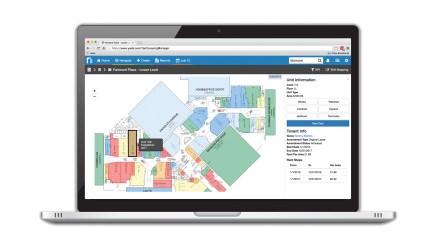Leasing agents often have to be part lawyer, part CPA and part tour guide when handling such details as monitoring existing tenant lease options, notifications and expiration dates, tracking prospective tenants, crafting letters of intent and arranging showings. Customer relationship management technology that manages these operations has come a long way over the past few years. A key development was stacking plans and floor plans that provide a two-dimensional visual representation of a building showing space availability, tenants on each floor, expiration dates and current rental rates. Color coding helps managers, leasing teams and others identify opportunities and expose risk. And mobile technology has taken lease execution out of the office and into the field, further shortening the leasing cycle. What’s the next step for CRM technology? The Balance Sheet asked Tom Dragmen, Yardi’s manager of global solutions, for a deeper dive into the emerging generation of stacking plan and floor plan technology. Q: What does “interactive stacking and floor plans” mean? A: This refers to a rich visual representation of lease expirations and related space details. They can overlay configurable performance measures and metrics on floor plans. They also provide a visual dimension for efficiently analyzing expirations, options, unit types and rent-per-area trends in buildings. Q: What’s the user perspective? A: Leasing agents and others get a full graphical display of vital information including lease statistics that determine rental rate trends. They can see stacking and floor plans based on expirations occurring in specific years, rents per area, encumbrances, options, proposals, unit types, and tenant performance measures such as sales per area, sales variances year over year and foot traffic. Q: How can this information be used? A: When integrated with CRM and accounting systems, the new generation of interactive stacking and floor...

